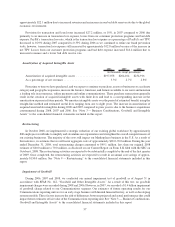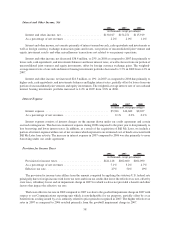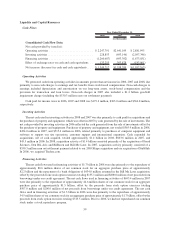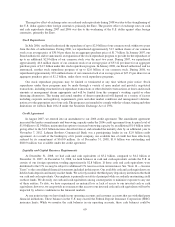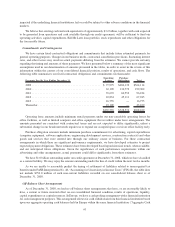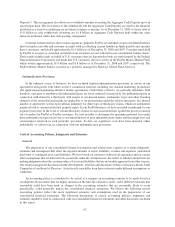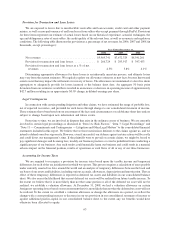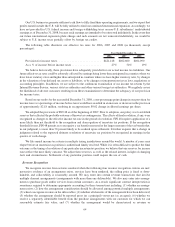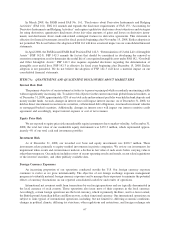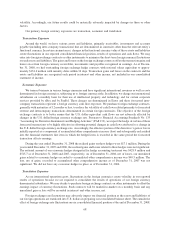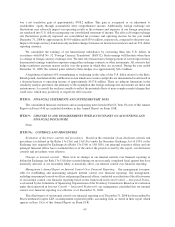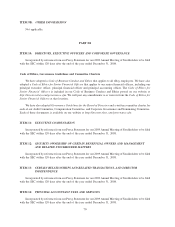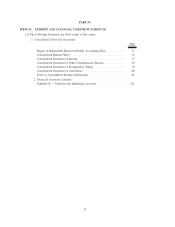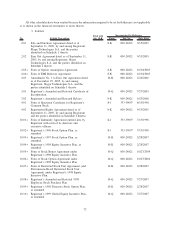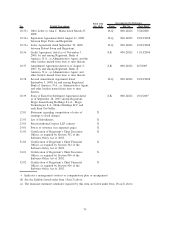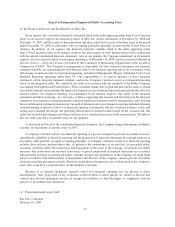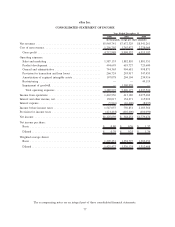eBay 2008 Annual Report Download - page 75
Download and view the complete annual report
Please find page 75 of the 2008 eBay annual report below. You can navigate through the pages in the report by either clicking on the pages listed below, or by using the keyword search tool below to find specific information within the annual report.In March 2008, the FASB issued FAS No. 161, “Disclosures about Derivative Instruments and Hedging
Activities” (FAS 161). FAS 161 amends and expands the disclosure requirements of FAS 133, “Accounting for
Derivative Instruments and Hedging Activities” and requires qualitative disclosures about objectives and strategies
for using derivatives, quantitative disclosures about fair value amounts of gains and losses on derivative instru-
ments, and disclosures about credit-risk-related contingent features in derivative agreements. This statement is
effective for financial statements issued for fiscal periods beginning after November 15, 2008. Earlier adoption is
not permitted. We do not believe the adoption of FAS 161 will have a material impact on our consolidated financial
statements.
In April 2008, the FASB issued FASB Staff Position FAS 142-3, “Determination of Useful Life of Intangible
Assets” (FSP 142-3). FSP 142-3 amends the factors that should be considered in developing the renewal or
extension assumptions used to determine the useful life of a recognized intangible asset under FAS 142, “Goodwill
and Other Intangible Assets.” FSP 142-3 also requires expanded disclosure regarding the determination of
intangible asset useful lives. FSP 142-3 is effective for fiscal years beginning after December 15, 2008. Earlier
adoption is not permitted. We do not believe the adoption of FSP 142-3 will have a material impact on our
consolidated financial statements.
ITEM 7A: QUANTITATIVE AND QUALITATIVE DISCLOSURES ABOUT MARKET RISK
Interest Rate Risk
The primary objective of our investment activities is to preserve principal while secondarily maximizing yields
without significantly increasing risk. To achieve this objective in the current uncertain global financial markets, as
of December 31, 2008, approximately 92% of our total cash and investment portfolio were held in bank deposits and
money market funds. As such, changes in interest rates will impact interest income. As of December 31, 2008, we
held no direct investments in auction rate securities, collateralized debt obligations, structured investment vehicles
or mortgaged-backed securities. Additionally, changes in interest rates will impact our interest sensitive credit
agreement and accordingly, impact interest expense or cost of net revenues.
Equity Price Risk
We are exposed to equity price risk on marketable equity instruments due to market volatility. At December 31,
2008, the total fair value of our marketable equity instruments was $133.3 million, which represented approx-
imately 4% of our total cash and investment portfolio.
Investment Risk
As of December 31, 2008, our recorded cost basis and equity investments was $100.7 million. These
investments relate primarily to equity-method investments in private companies. We review our investments for
impairment when events and circumstances indicate a decline in fair value of such assets below carrying value is
other-than-temporary. Our analysis includes review of recent operating results and trends, recent sales/acquisitions
of the investee securities, and other publicly available data.
Foreign Currency Exposures
An increasing proportion of our operations conducted outside the U.S. Our foreign currency exposure
continues to evolve as we grow internationally. The objective of our foreign exchange exposure management
program is to identify material foreign currency exposures and to manage these exposures to minimize the potential
effects of currency fluctuations on our reported consolidated cash flow and results of operations.
International net revenues result from transactions by our foreign operations and are typically denominated in
the local currency of each country. These operations also incur most of their expenses in the local currency.
Accordingly, certain foreign operations use the local currency, which is primarily the Euro, and to a lesser extent,
the British pound Australian dollars and Korean won, as their functional currency. Our international operations are
subject to risks typical of international operations, including, but not limited to, differing economic conditions,
changes in political climate, differing tax structures, other regulations and restrictions, and foreign exchange rate
67


